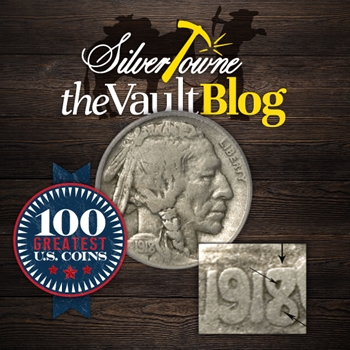
When it comes to United States coinage, there are a number of examples off the top of our head that we can think of. One of those initial thoughts? The Buffalo nickel. Designed by James Earle Fraser using the likeness of a Native American chief for inspiration, the nickel design has become one of the most recognizable coins out there and has become equally as collectible.
Minted from 1913-1938, the Buffalo nickel was a surefire pick for at least one spot on the top 100 Greatest United States Coins series. In the next edition of the series exploring Whitman Publishing’s fourth edition of the publication, we take note from author Jeff Garrett with help from Ron Guth on this Buffalo nickel entry. It also happens to be one of the scarcest, if not the scarcest, examples out there.
#84 - 1918-D, 8 Over 7 Buffalo Nickel
Mint errors are common in numismatics, especially that of the coinage that circulated from the 20th century. The Buffalo nickel is no exception as the 1918-D, 8/7 nickel proves to be the rarest produced from the series. When a hub was switched for another during the annealing process in production in 1917, the mint error was a result. However, it took around 20 years for the error to be noticed and the overdate example had already been circulating. This is also most likely why a lot of the examples that have been identified as overdates are extremely worn.
One of the events that took place to try to explain the error was the small-denomination shortage that occurred across the country during World War I. The United States Mint during that time was tasked with producing much bigger quantities of both the Lincoln cent and the Buffalo nickel coins. Because of the overwhelming amount of coins being produced in a panic, the error was thought to have been a reason the 1918-D, 8 Over 7 occurred. The author, Jeff Garrett, made note that other overdate coins such as the 1918-S, 8 Over 7 quarter dollar and the 1942, 2 Over 1 and 1942-D, 2 Over 1 dimes were struck during what would be war years as well.
The certified population of this rare overdate nickel sets at just over 2,000. In 1960, this example was valued at $375 in extremely fine condition. In the current fourth edition of Whitman’s publication (2015), the coin is now valued at $10,000.







